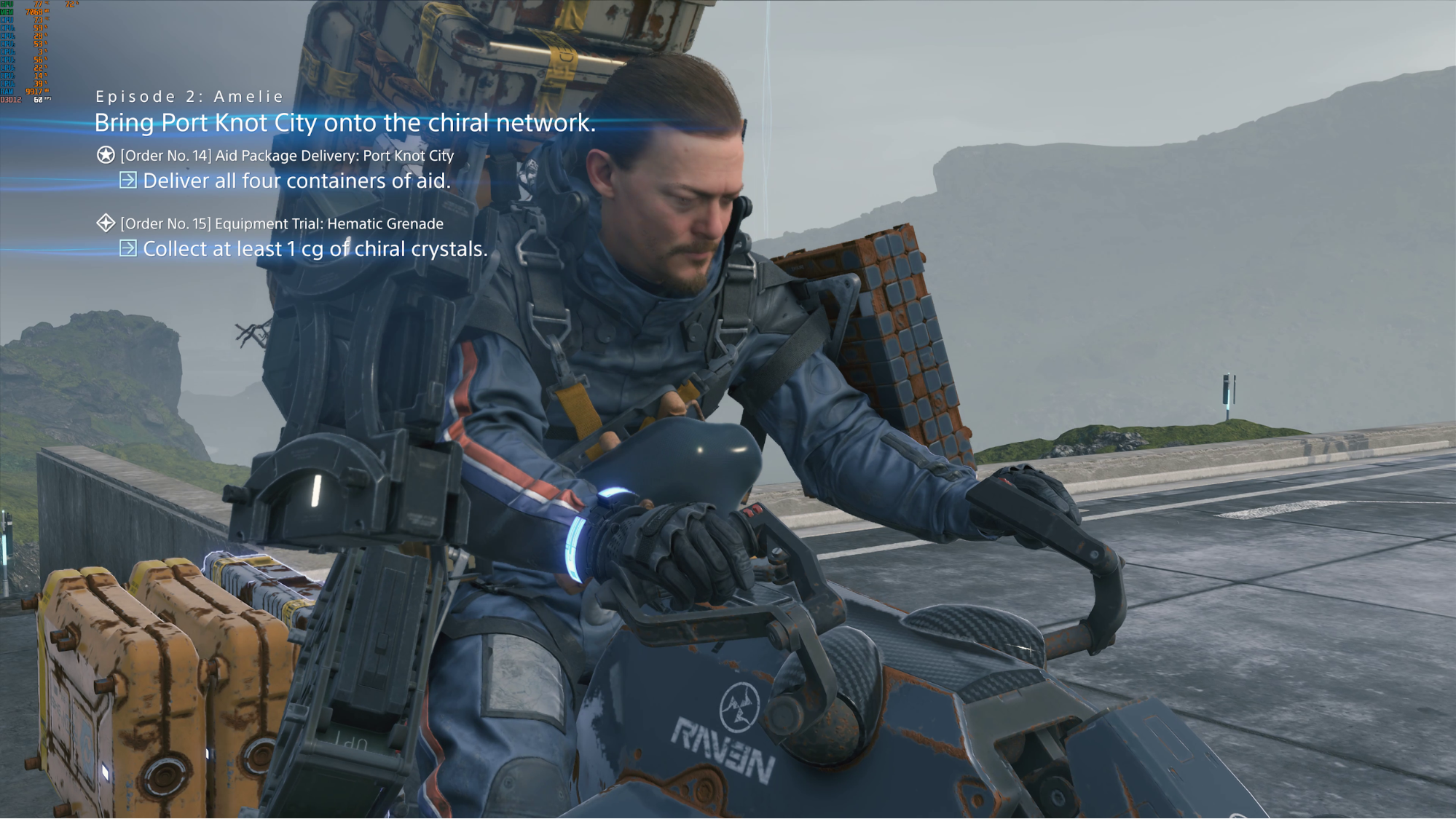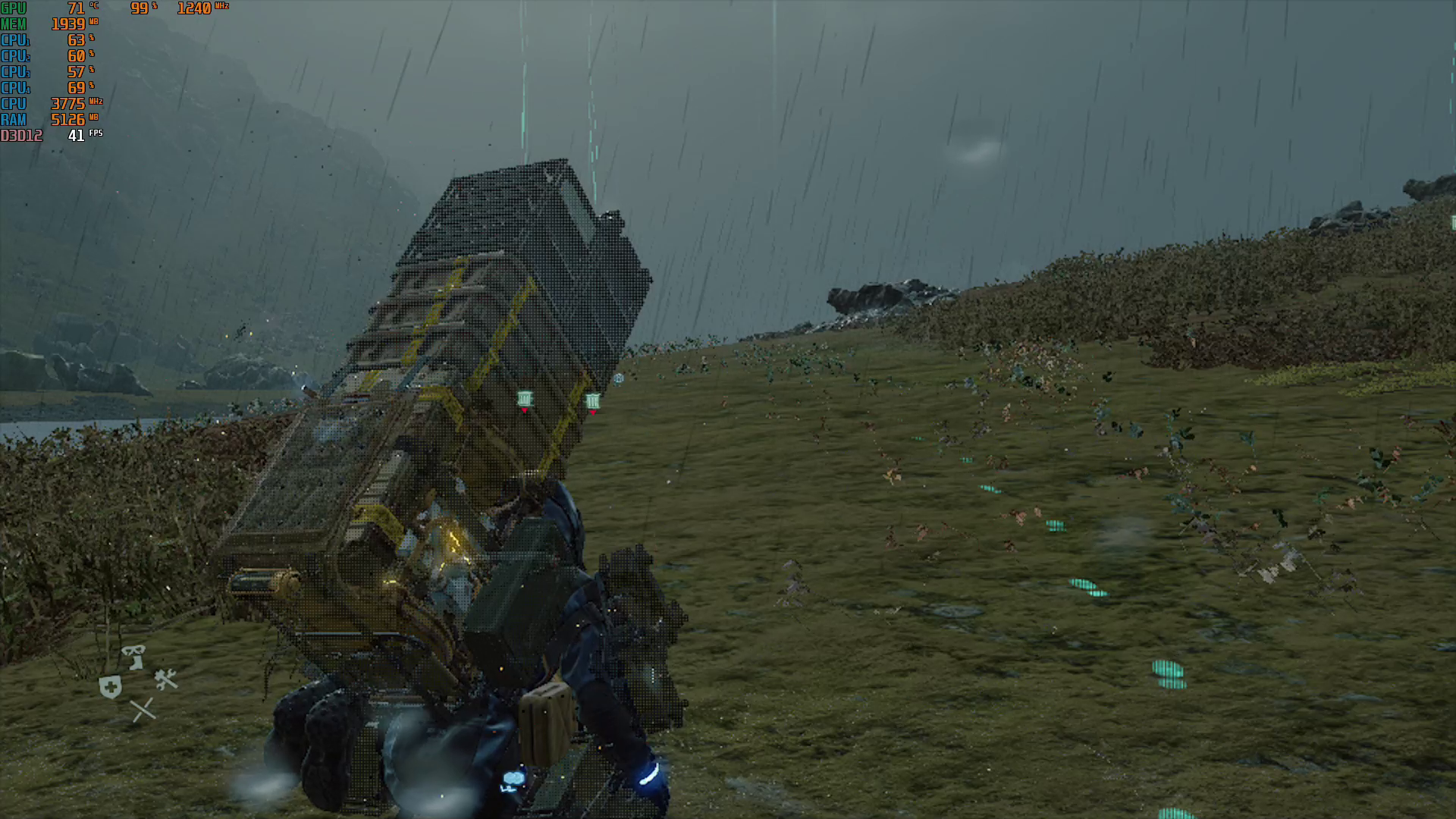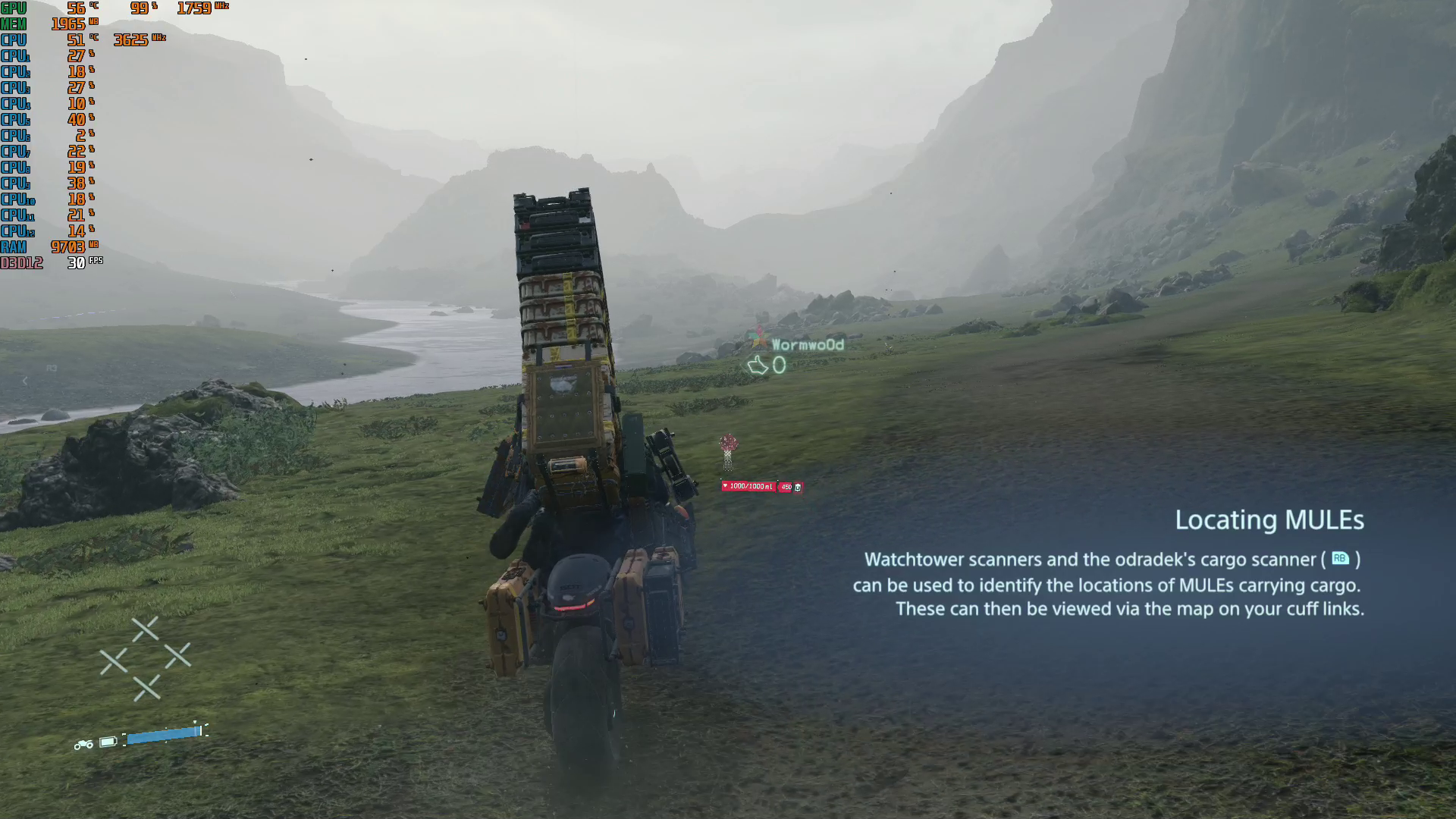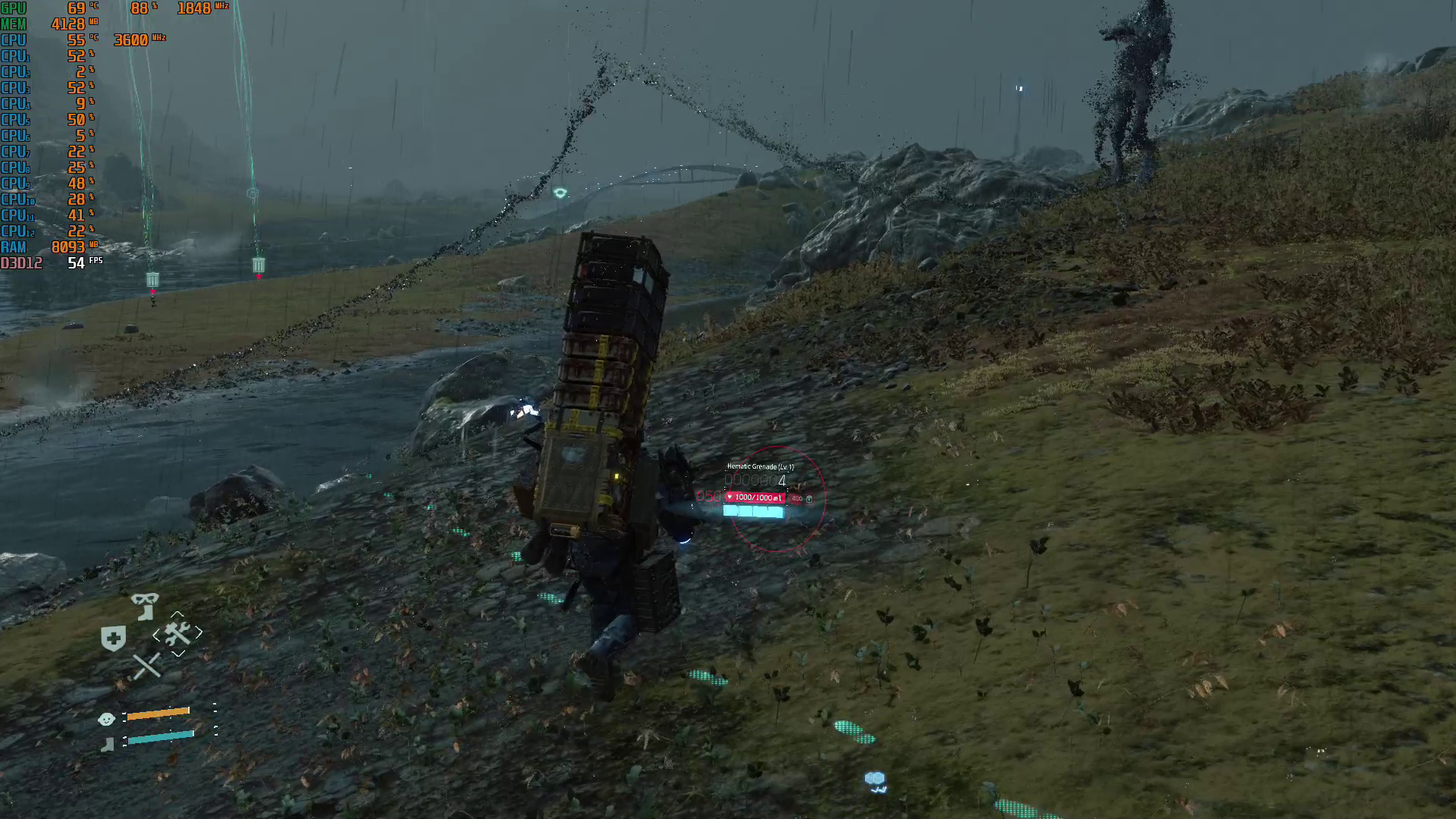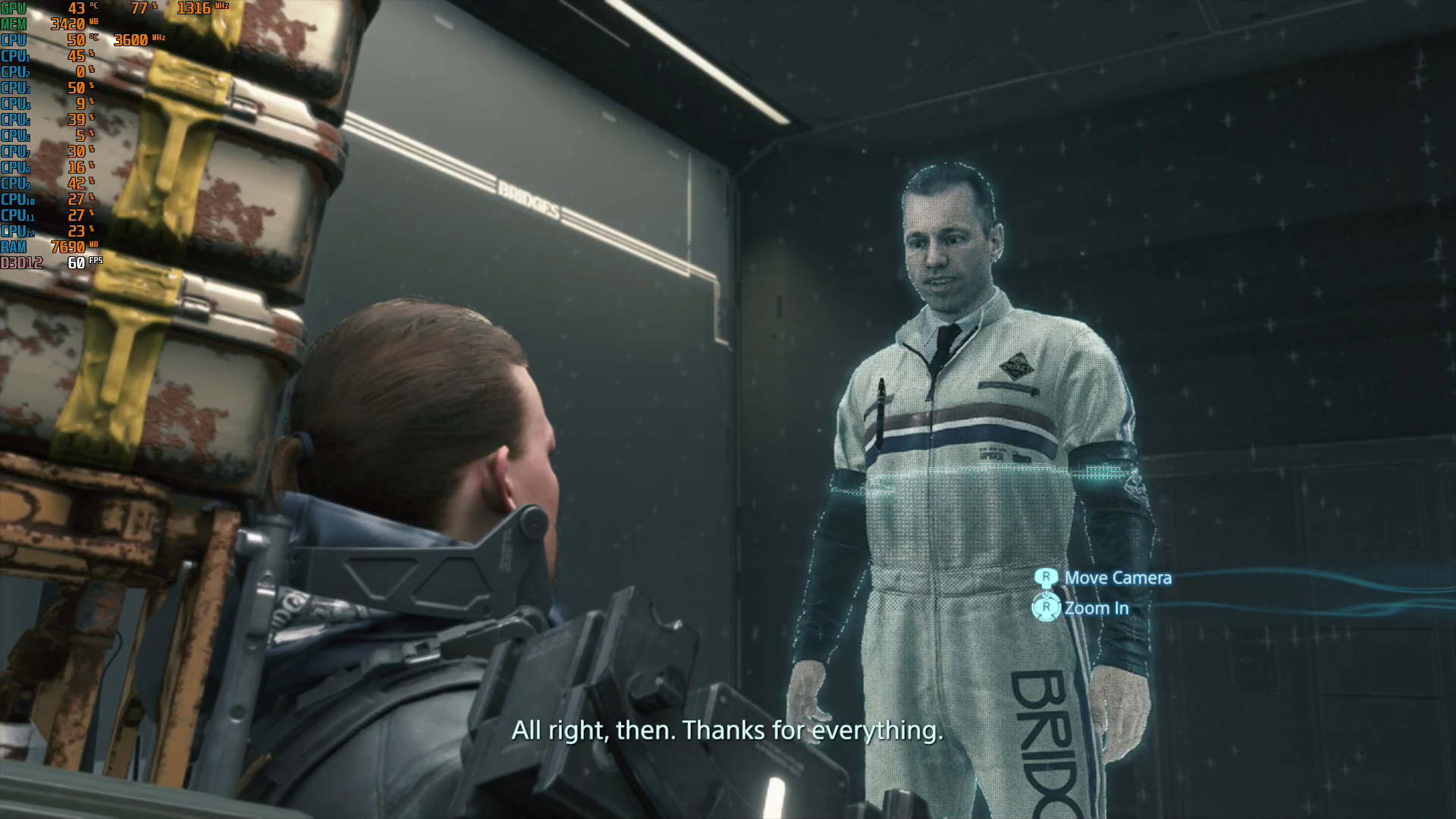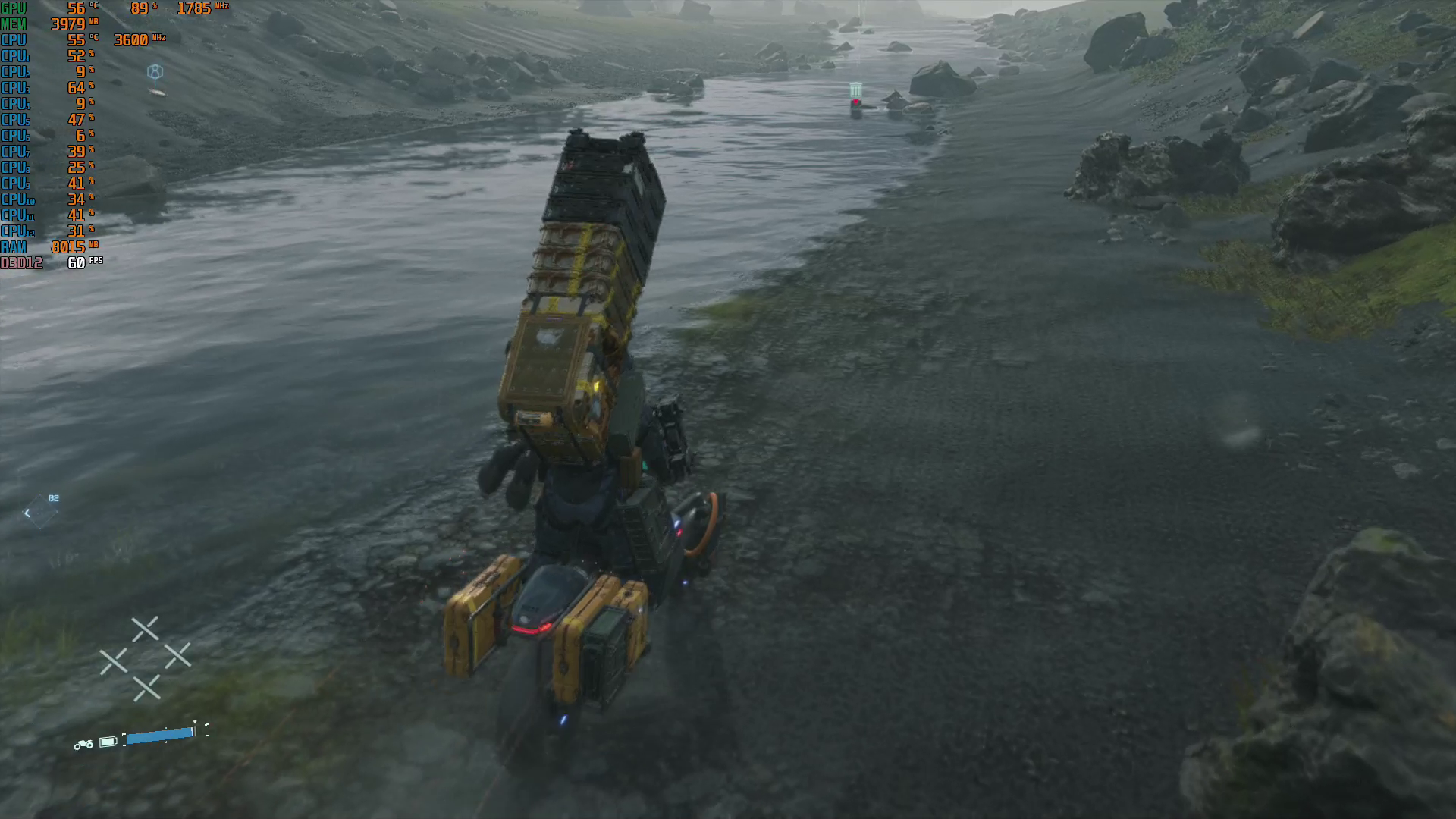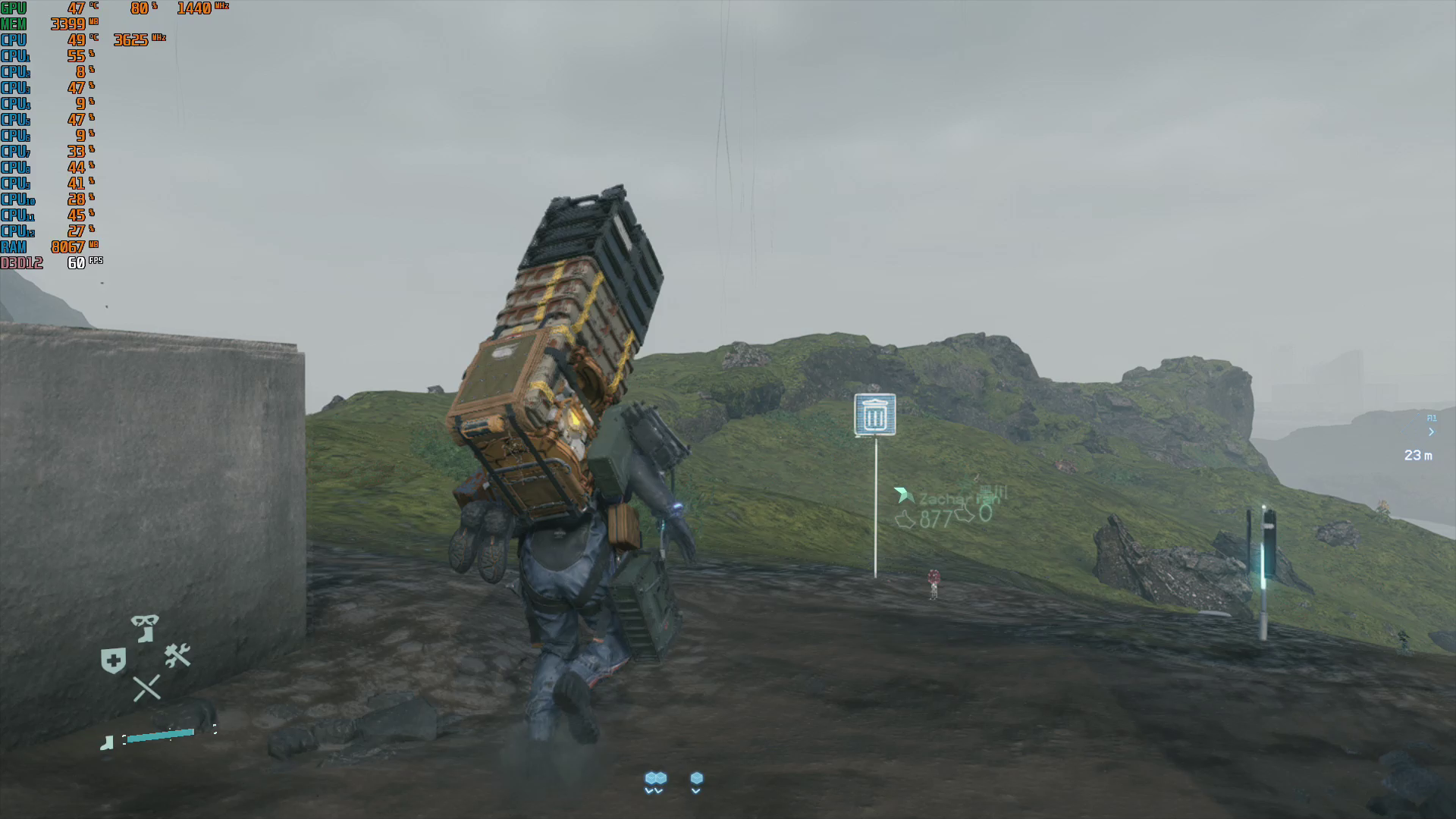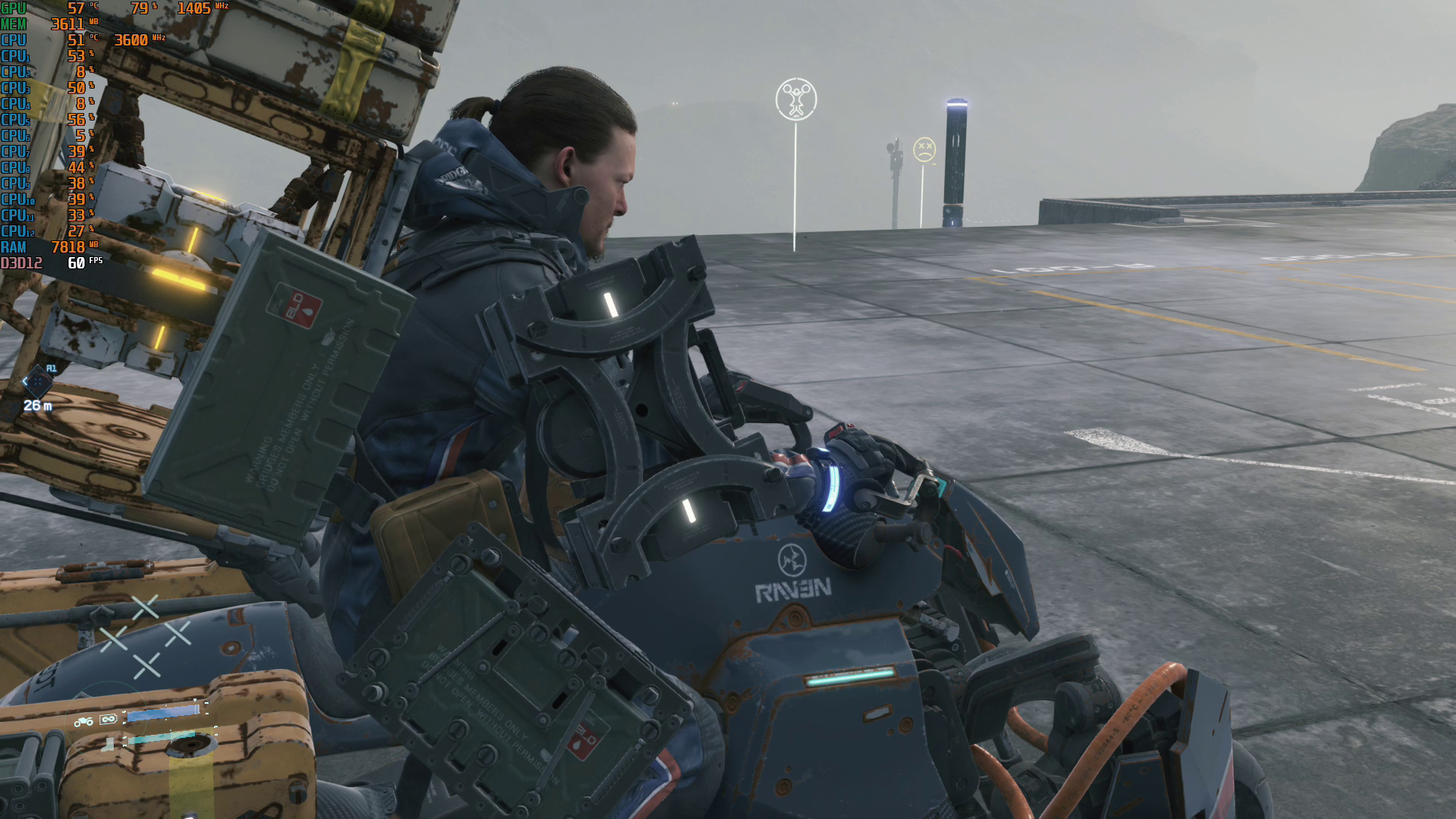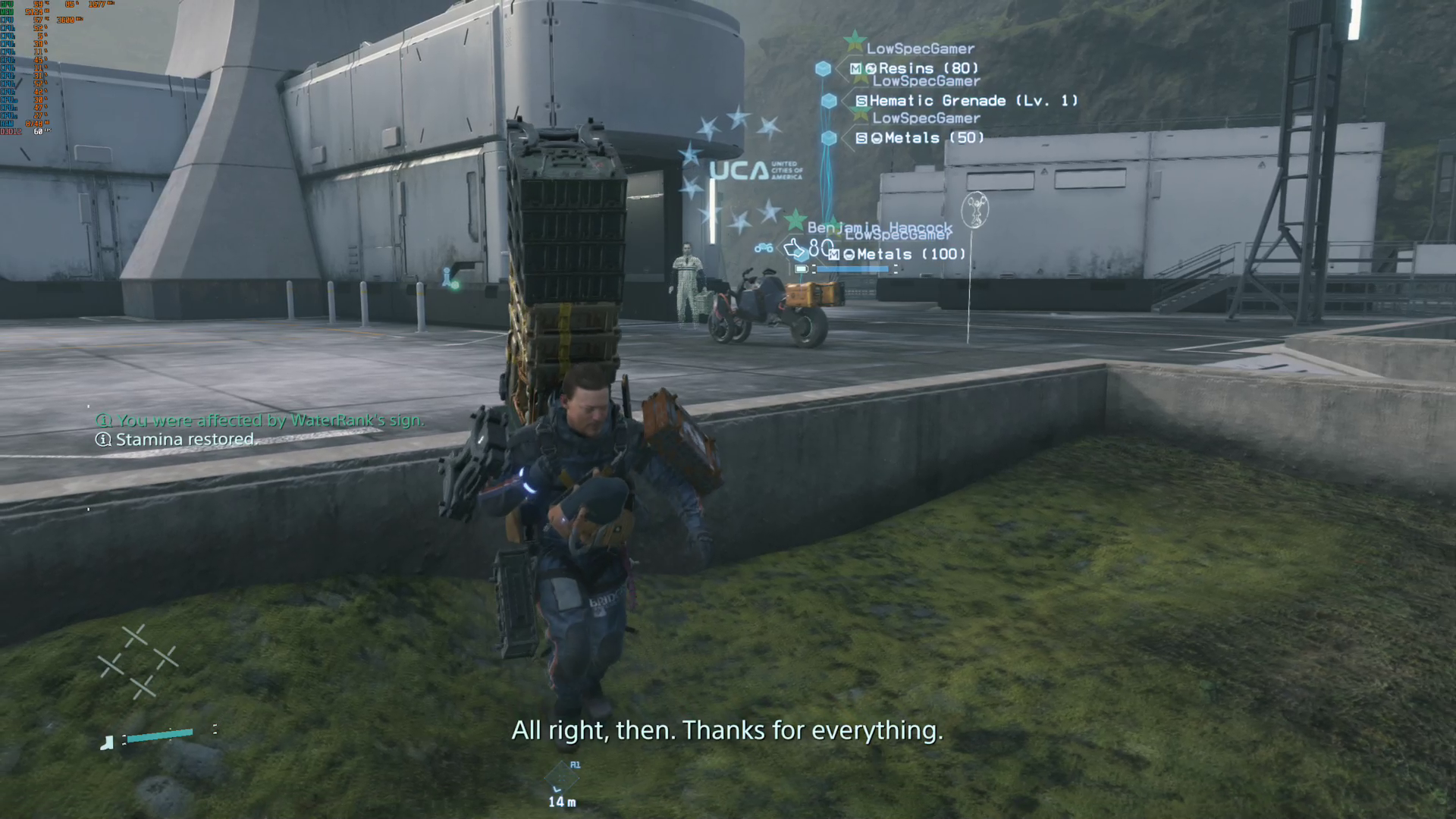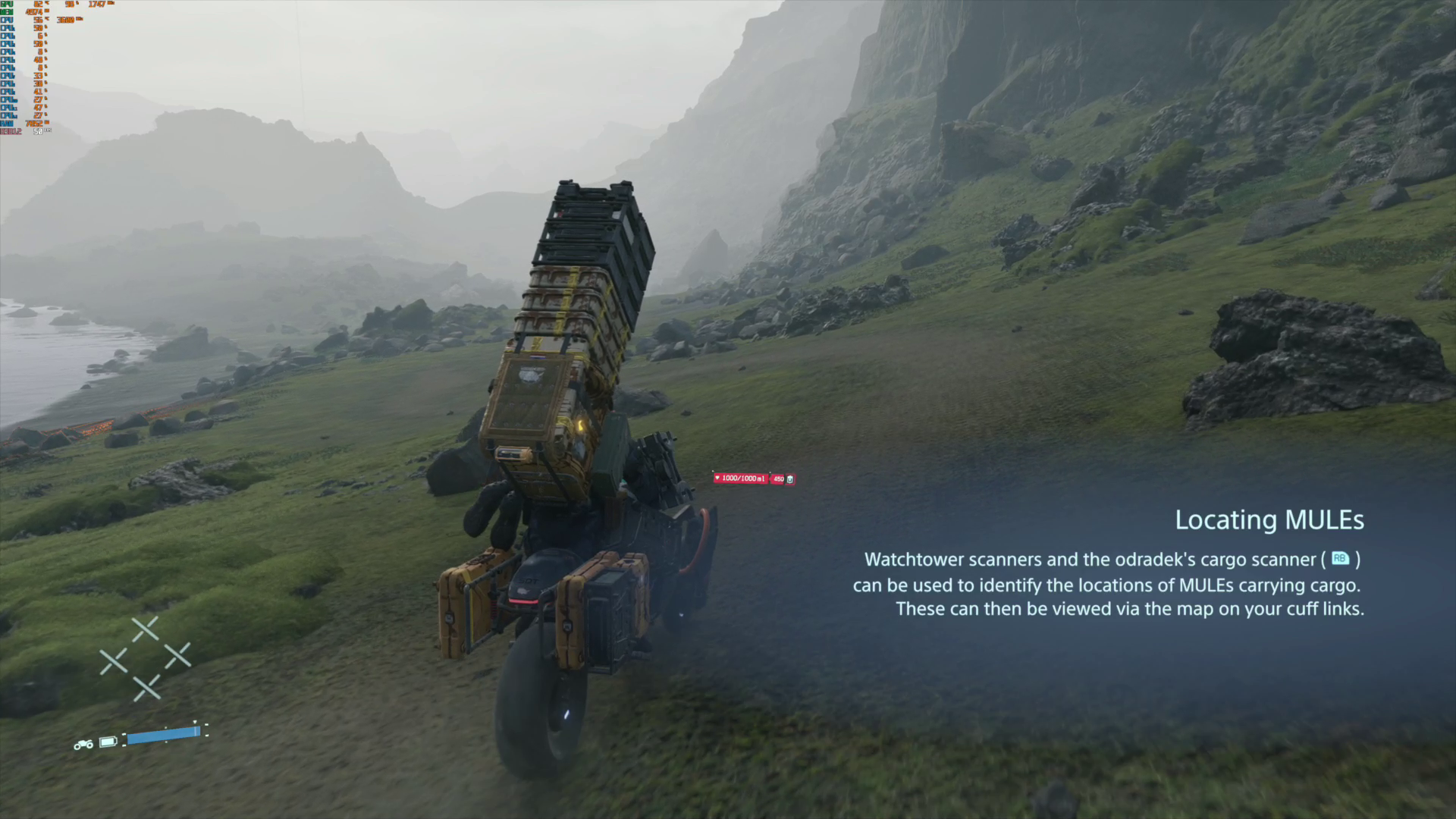Death Stranding: How it Plays on Different Graphics Cards
What you need to play Death Stranding at smooth frame rates
Less than 9 months since its debut as a PlayStation 4 exclusive, Hideo Kojima's first game on a new IP in more than two decades has arrived on PC, signaling the start of several Playstation exclusives that are destined for our favorite platform.
Death Stranding is the first PC game running on Guerilla Game's Decima engine. So, how does it scale between different GPUs? What is the minimum you need to get better than a console experience?
I tested a variety of GPUs from different generations to find the answer. Let's dig in.
| GPU | Settings | Framerate |
|---|---|---|
| Vega 8 (Ryzen 3 3200G) | 720p, Lowest settings, FidelityFX Contrast Adaptive Sharpening On | 30-40 |
| GTX 1050 Ti | 1080p, Medium preset | 30 |
| GTX 1060 | 1080p, Medium preset, Motion Blur, Ambient Occlusion, Screen Space Reflections and Depth of Field enable | 60 |
| GTX 1650 | 1080p, Medium preset | 60-50 |
| GTX 1650 | 1080p, Medium settings, Motion Blur, Ambient Occlusion, Screen Space Reflections and Depth of Field enabled, FidelityFX Contrast Adaptive Sharpening On | 60 |
| GTX 1650 | 1080p, Highest settings, FidelityFX Contrast Adaptive Sharpening On | 60 |
| GTX 1070 | 1080p, Highest settings | 60 |
| GTX 1070 | 1440p, Highest settings, FidelityFX Contrast Adaptive Sharpening On | 60 |
| RX 5600XT | 1440p, Highest settings | 60 |
| GTX 1080 | 1440p, Highest settings | 60 |
| RTX 2080 Ti | 4K, Highest settings | 60-50 |
| RTX 2080 Ti | 4K, Highest settings, DLSS Quality setting | 60 |
Test Bench
For most of the tests, I was using a Ryzen 5 2600, a six core-12 thread Zen+ CPU combined with 16 GB of RAM at @ 2600 MHz.
Interestingly enough while the 2600 is more than enough for high framerates in most games I have tested, it had difficulty achieving over 90 fps when paired with some of stronger GPUs in this test. However, it was more than enough for a 60 fps lock.
Integrated AMD Graphics
For this specific test, I used a Ryzen 3 3200G APU with 8GB of DDR4 RAM @ 2600 MHz. The 3200G is a Zen+ quad core CPU with Vega 8 integrated graphics in one package. While I used the full TDP desktop variant, versions of these integrated graphics are a popular option for laptops.
The main limit on this spec is resolution. After lowering all the settings, the lowest resolution this game allows is 720p. Trying a lower resolution in the configuration file just causes an error. Since there is no free resolution scaler, the options for integrated GPUs are limited.
Get Tom's Hardware's best news and in-depth reviews, straight to your inbox.
Thankfully there is a bit of a workaround that can help us here. Death Stranding supports FidelityFX Contrast Adaptive Sharpening (CAS), a post-processing effect by AMD but made an open standard, meaning that it will work on a large variety of GPUs.
In Death Stranding, activating CAS renders the game at 75% of the window resolution, upscales it and sharpens the image per pixel. This is meant to help increase the effectiveness of Temporal Anti Aliasing and, by rendering it at lower resolution, the game can offer an important performance boost while still providing a sharp image.
While I suspect this feature was intended for use at higher resolutions, we can use it here to significantly boost our integrated GPU performance.
This allows Vega 8 to run Death Stranding at 30 to 40 fps, which is playable and an impressive feat for an integrated GPU. The only real problem is that, unlike many other resolution scalers, CAS is using a lower resolution for everything, not just the 3D elements of the game, which means the UI elements and text can be harder to read.
The experience is basic and not graphically impressive, but functional. Frame rates were smooth even in the worst moments. While playing in an upscaled lower resolution, Death Stranding loses a lot of environmental detail but the game is still playable. If you absolutely want to experience this game no matter what, CAS definitely works!
Death Stranding on GTX 1050
Last generation's cheapest mid-range GPU from Nvidia is quickly starting to show its age.
Curiously enough, while the game seemed to have no issue with the Vega 8 integrated GPU, the GTX 1050 would trigger a warning when opening the game, claiming that the test computer was under the minimum requirements for the game.
The GTX 1050's 2GB of VRAM presents an important challenge when trying to increase settings and overall I was unable to hit 60 fps even on lower settings.
However, if you limit your expectations to 30 fps and 1080p (the resolution and framerate of the game on the base PS4), things start looking much brighter.
To get a stable 30 fps, the furthest I could push during my test is medium settings, which is a bit short of the settings used by a PS4, but not bad looking at all. The lack of effects like motion blur or screen-space reflections on elements like water might feel a bit last-gen but the game is still full of interesting details.
Worth noting is that more intensive water effects, such as the ones that happen when captured by a BT, can lead to sub 30 frame rates at times, but still good enough to have a base playable experience which starts to be comparable (if just a bit less stable and good looking) to the console version.
Death Stranding on GTX 1060
With the extra power of one of the most popular GPUs out there (at least according to the Steam Hardware Survey), we start seeing some major improvement.
With 1080p, medium settings, TAA and all other effects enabled (Motion Blur, Ambient Occlusion, Screen Space Reflections and Depth of Field), the experience is very close to the PS4 visuals ('Default' seems to be the closest, just one level above) but with one additional advantage, the console version lacked: 60 fps with only some short-lived drops during effect and water-heavy scenes.
The experience is superb. 60 fps makes the intricate animation work of this game to shine through and the additional effects, like screen-space reflections on water, makes for the complete package.
For those who want a bit more, or those who find the fps drops unacceptable, there is one further choice: turn on CAS to render the game at a lower resolution, upscale and sharpen.
With the extra space allowed by CAS, you can turn the settings up to high and benefit from improved image quality.
At 1080p, Death Stranding's CAS offers a better than expected result at upscaling a lower resolution image, but it is still noticeably inferior to native 1080p. Still, this is a powerful tool if higher settings or super stable 60 fps is a must.
Death Stranding on GTX 1650
Nvidia's current generation entry-level GPU comes in close behind the 1060, but it's just a tad slower. At medium settings and 1080p Death Stranding can't quite maintain the 60 fps lock. Here is where the use of CAS becomes handy.
With CAS enabled, medium settings, TAA and all other effects enabled (Motion Blur, Ambient Occlusion, Screen Space Reflections and Depth of Field) the GPU can comfortably produce 60 fps.
Death Stranding on GTX 1070
With one more jump, we can finally achieve the dream: highest settings, 60 fps, 1080p. That's the base PS4 resolution, at double the framerate and highest settings.
Unsurprisingly, this game is fantastic looking at its maximum settings and just wonderful at 60 fps, and now there's enough power left over to experiment with higher resolutions.
With CAS enabled, you can easily venture into 1440p while still using the highest settings. CAS starts to shine at higher resolutions and if you have a high-resolution monitor this a recommended option.
Let's take a small detour from Nvidia to explore the next level.
Death Stranding on RX 5600 XT
AMD's current higher mid-range offering shines here, with highest settings at 1440p and 60 fps while using the GPU to the fullest.
At this point, what we are gaining is the clarity of higher resolutions and it all depends on your priorities.
I tried getting to run 4K by using CAS and lowering settings to medium. This was almost possible at 60 fps. However, the amount of settings cuts I needed prevent me from recommending 4K play on the RX 5600XT.
Death Stranding on GTX 1080
Interestingly enough, the high-end card from Nvidia's older generation is powerful enough to run Death Stranding at highest settings and 1440p but not quite enough to get to native 4K without CAS.
Death Stranding RTX 2080 Ti
This is a bit of a dramatic jump, but during these tests, I had access to Nvidia's current generation best gaming GPU and wanted an opportunity to see how Death Stranding runs on a top-of-the-line card.
The mighty 2080 Ti can achieve 60 fps with the highest settings in 4K... just barely. GPU is used to the max and there can be the odd frame drop in certain areas.
However, running the game natively in 4K might not be necessary due to the welcome addition of Deep Learning Super Sampling (DLSS) 2.0.
DLSS is an Nvidia only technology, currently exclusive to RTX GPUs, that uses the tensor cores in the GPU to reconstruct a high-resolution image from a lower resolution image using an algorithm trained by machine learning.
Since DLSS reconstructs the image, rather than just upscaling like CAS, the result is a high-resolution image that looks remarkably close to the native result but at a dramatically reduced cost in performance.
DLSS has two settings in Death Stranding: Performance, which reconstructs a less detailed image but is faster, and Quality, which gets very close to native. This addition is incredibly useful for achieving high resolutions and, on the RTX 2080 Ti, means 60 fps or more at 4K resolution and highest settings is possible and looks spectacular.
The Bottom Line
Death Stranding has been expertly ported to PC, and while settings options are a bit lacking compared to other PC titles, the game still supports modern technologies like FidelityFX, CAS and DLSS to great effect.
On integrated GPUs like the Vega 8, the limited choices for resolution can be a problem, but using CAS to render at a lower resolution allows the game to be playable. The experience is basic but functional.
Note that this does not apply to Intel's integrated graphics solutions. Jarred tried to get Death Stranding running on both UHD Graphics 630 (with a desktop i9-9900K) and Iris Plus Graphics (on a laptop with i7-1065G7). At minimum settings and 720p, with CAS upscaling enabled, the result was still less than 20 fps with either GPU. Xe Graphics will hopefully change things in the Intel GPU camp later this summer.
Moving to dedicated GPUs, something like a GTX 1050 is enough to play on 30 fps at 1080p at medium settings, which does look a bit inferior to the console counterpart but works well enough to be enjoyable.
Jumping to something as common as a GTX 1060 allows for true 60 fps in all but the heaviest instances using medium settings and all the post-processing effects, which gets the game pretty close to console graphics but at double the frame rates, which is a similar result to what you would get a newer GTX 1650.
A GTX 1070 is enough for highest settings at 60 FPS, and a GTX 1080 or RX 5600 XT is the more ideal solution for 1440p.
RTX GPUs like the GTX 2080 Ti have the additional advantage of DLSS 2.0 which allows for higher resolutions with much lower performance hits. This newer feature allows the game to fully utilize RTX GPUs for 1440p and 4K.
-
jakjawagon ReplyHideo Kojima's first game on a new IP in more than two decades
If you don't count 2003's Boktai, which didn't get nearly the success it deserved. -
Beowulf5150 I have a laptop with a vanilla RTX 2070, and I play on my ultrawide monitor at 1080p, so I guess that's at 2520x1080. Yes, I know it's supposed to be 2560, but we're talking about an actual 16x9 game, so it truly plays at 2520x1080.Reply
Anyway, at max settings at that resolution, I see smooth framerates with zero noticeable dips. I've yet to benchmark it, but it's smoother than the PS4 Pro and looks better at the same time.
I haven't tried 4K (with or without DLSS 2.0), but the ultrawide experience is good enough that I don't really feel inclined to do so. -
mitch074 How about on a Polaris card? I've read that the game runs very well on a RX480, better than a GTX1060. Is it true?Reply
